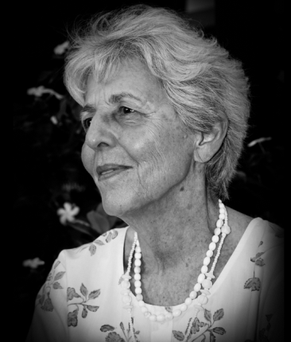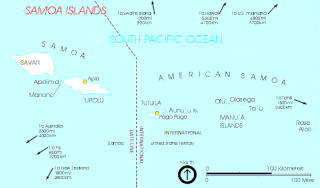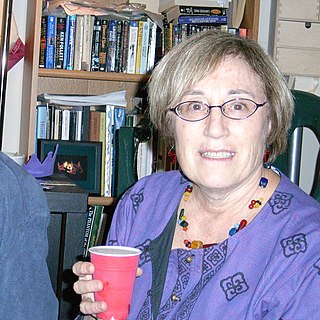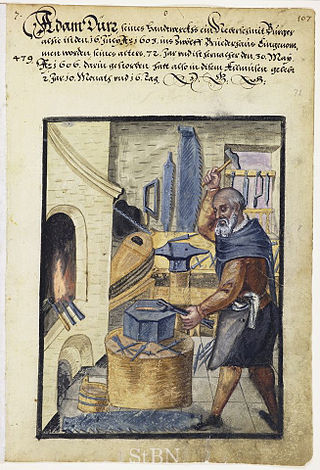Related Research Articles

Technology is the application of conceptual knowledge for achieving practical goals,especially in a reproducible way. The word technology can also mean the products resulting from such efforts,including both tangible tools such as utensils or machines,and intangible ones such as software. Technology plays a critical role in science,engineering,and everyday life.
Organizational learning is the process of creating,retaining,and transferring knowledge within an organization. An organization improves over time as it gains experience. From this experience,it is able to create knowledge. This knowledge is broad,covering any topic that could better an organization. Examples may include ways to increase production efficiency or to develop beneficial investor relations. Knowledge is created at four different units:individual,group,organizational,and inter organizational.

Sir John Eric Sidney Thompson was a leading English Mesoamerican archaeologist,ethnohistorian,and epigrapher. While working in the United States,he dominated Maya studies and particularly the study of the Maya script until well into the 1960s.

Material culture is the aspect of culture manifested by the physical objects and architecture of a society. The term is primarily used in archaeology and anthropology,but is also of interest to sociology,geography and history. The field considers artifacts in relation to their specific cultural and historic contexts,communities and belief systems. It includes the usage,consumption,creation and trade of objects as well as the behaviors,norms and rituals that the objects create or take part in.
Feminist archaeology employs a feminist perspective in interpreting past societies. It often focuses on gender,but also considers gender in tandem with other factors,such as sexuality,race,or class. Feminist archaeology has critiqued the uncritical application of modern,Western norms and values to past societies. It is additionally concerned with increasing the representation of women in the discipline of archaeology,and reducing androcentric bias within the field.
The term bioarchaeology has been attributed to British archaeologist Grahame Clark who,in 1972,defined it as the study of animal and human bones from archaeological sites. Redefined in 1977 by Jane Buikstra,bioarchaeology in the United States now refers to the scientific study of human remains from archaeological sites,a discipline known in other countries as osteoarchaeology,osteology or palaeo-osteology. Compared to bioarchaeology,osteoarchaeology is the scientific study that solely focus on the human skeleton. The human skeleton is used to tell us about health,lifestyle,diet,mortality and physique of the past. Furthermore,palaeo-osteology is simple the study of ancient bones.

Sir John Rankine Goody (1919–2015) was an English social anthropologist. He was a prominent lecturer at Cambridge University,and was William Wyse Professor of Social Anthropology from 1973 to 1984.
The following events related to sociology occurred in the 1980s.
Practice theory is a body of social theory within anthropology and sociology that explains society and culture as the result of structure and individual agency. Practice theory emerged in the late 20th century and was first outlined in the work of the French sociologist,Pierre Bourdieu.

Olga Francesca Linares was a Panamanian–American academic anthropologist and archaeologist,and senior staff scientist (emerita) at the Smithsonian Tropical Research Institute (STRI) in Panama,who supported much of her research throughout her career. She is well known for her work on the cultural ecology of Panama,and more recently in the Casamance region of Southern Senegal. She is also concerned with the social organization of agrarian systems as well as the relationship between "ecology,political economy,migration and the changing dynamics of food production among rural peoples living in tropical regions".

This is an English language bibliography of American Samoa and its geography,history,inhabitants,culture,biota,etc.
Wendy Ann Ashmore was an American professor of Maya archaeology at the University of California,Riverside. She was involved in excavations in Belize,Guatemala,and Honduras. Her research focused on the implications that spaces,settlement patterns,and gender can have on social organization. She received her B.A. from the University of California,Los Angeles in 1970 and her Ph.D. in 1981 from the University of Pennsylvania. Her dissertation analyzed the results of the site periphery program that took place between 1975 and 1979 at Quirigua,Guatemala. In her dissertation,she discusses the use of random sampling in the Maya region and offers suggestions for how research might be carried out in that region in the future. In the 1980s she taught archaeology at Rutgers University. She left for a position at the University of Pennsylvania. Ashmore died in 2019 at her home in Riverside,California.

Aihwa Ong is Professor of Anthropology at the University of California,Berkeley,a member of the Science Council of the International Panel on Social Progress,and a former recipient of a MacArthur Fellowship for the study of sovereignty and citizenship. She is well known for her interdisciplinary approach in investigations of globalization,modernity,and citizenship from Southeast Asia and China to the Pacific Northwest of the United States. Her notions of 'flexible citizenship','graduated sovereignty,' and 'global assemblages' have widely impacted conceptions of the global in modernity across the social sciences and humanities. She is specifically interested in the connection and links between an array of social sciences such as;sociocultural anthropology,urban studies,and science and technology studies,as well as medicine and the arts.

Joan Margaret Gero was an American archaeologist and pioneer of feminist archaeology. Her research focused on gender and power issues in prehistory,particularly in the Andean regions of Argentina and Peru.
Wendy Beck is an Adjunct Associate Professor at the University of New England in archaeology and cultural heritage.

The anthropology of technology (AoT) is a unique,diverse,and growing field of study that bears much in common with kindred developments in the sociology and history of technology:first,a growing refusal to view the role of technology in human societies as the irreversible and predetermined consequence of a given technology's putative "inner logic";and second,a focus on the social and cultural factors that shape a given technology's development and impact in a society. However,AoT defines technology far more broadly than the sociologists and historians of technology.
Susan H. Lees is an anthropologist and human ecologist,and the former editor-in-chief of Human Ecology and American Anthropologist. She is professor emeritus of cultural anthropology at City University of New York.
The archaeology of childhood is an emerging field of study within archaeology that applied anthropology,ethnography,history,sociology,osteology and biological anthropology to the study of the development and lives of juvenile human individuals (children) in past societies from a material perspective.
Dean Richard Snow is an archeologist and an American historian who is Professor Emeritus of Anthropology at Pennsylvania State University who has conducted extensive archeological research on the Iroquois Indian nations of north-eastern America,and other indigenous peoples in the highlands of Mexico,and in Spain and France. Snow specializes in Ethnohistory and is considered an authority in this field. Snow has conducted archaeological field investigations along the Mohawk Valley and at the Saratoga battlefield. In 1977 he was asked by the U.S. Department of Justice to act as a historical consultant involving Indian land claims against the state of Maine. Snow was raised in Sleepy Eye,Minnesota. He married Janet Keller in 1963. They and their three adult children all live in the Saratoga region in upstate New York. Snow has written many books and journal articles on North-American archeology,Indian nations and related subjects.
References
- 1 2 3 4 "Dr. Marcia-Anne Dobres - Department of Anthropology - University of Maine". Department of Anthropology. Retrieved 2019-02-08.
- ↑ "Remembering Marcia-Anne Dobres | Geography-Anthropology | University of Southern Maine". usm.maine.edu. Archived from the original on 11 June 2021. Retrieved 11 June 2021.
- ↑ "Remembering Marcia-Anne Dobres | Geography-Anthropology | University of Southern Maine". usm.maine.edu. Archived from the original on 2021-11-24. Retrieved 2022-02-28.
- ↑ Dobres, Anne (1994). "Social Agency and the Dynamics of Prehistoric Technology". Journal of Archaeological Method and Theory. 3 (1): 211–58. doi:10.1007/BF02231876. JSTOR 20177312. S2CID 143749717.
- ↑ Dobres, Marcia-Anne (2000). Technology and Social Agency: Outlining a Practice Framework for Archaeology. Blackwell. ISBN 978-1577181231.
- ↑ Ahearn, Laura (October 2001). "Language and Agency". Annual Review of Anthropology. 30: 109–137. doi:10.1146/annurev.anthro.30.1.109.
- ↑ Hicks, Dan (2010). The Material Cultural Turn: Event and Effect. Oxford: Oxford University Press. pp. 25–98.
- ↑ Dobres, Marcia-Anne (28 April 2009). "Archaeologies of Technology". Cambridge Journal of Economics. 34 (1): 103–114. doi:10.1093/cje/bep014.
- ↑ Sillar, Bill (2002). "Marcia-Anne Dobres. Technology and social agency: outlining a practice framework for archaeology. xiii+300 pages, 25 figures. 2000. Oxford & Malden (MA): Blackwell; 1-57718-123-9 hardback £55 & $70.95, 1-57718-124-7 paperback £17.99 & $33.95". Antiquity. 76 (292): 593–594. doi:10.1017/S0003598X00090852. ISSN 0003-598X. S2CID 162880614.
- ↑ Wright, Rita P. (2004). "Review of Technology and Social Agency". Technology and Culture. 45 (1): 231–232. doi:10.1353/tech.2004.0051. ISSN 0040-165X. JSTOR 40060626. S2CID 111339926.
- ↑ Stockl, Andrea (2000). "Review of Technology and Social Agency. Outlining a Practice Framework for Archaeology". Cambridge Anthropology. 22 (1): 78–80. ISSN 0305-7674. JSTOR 23820355.
- ↑ Mullins, Paul R. (2001). "Technology and Social Agency. Marcia-Anne Dobres. 2000. Blackwell Publishers, Oxford, UK. xii + 300 pp. $62.95 (cloth), ISBN 1-57718-123-9; $29.95 (paper), ISBN 1-57718-124-7.Agency in Archaeology. Marcia-Anne Dobres and John Robb, editors. 2000. Routledge, NY. xiii + 270 pp. $32.99 (paper), ISBN 0-415-20761-4". American Antiquity. 66 (4): 755–756. doi:10.2307/2694198. ISSN 0002-7316. JSTOR 2694198.
- ↑ Miller, Heather M.-L. (2000). "The Social Dynamics of Technology: Practice, Politics, and World Views. Marcia-Anne Dobres and Christopher R. Hoffman, editors. 1999. Smithsonian Institution Press, Washington, D.C. xvi +240 pp., 29 figures, 1 table, references cited, index. $45.00 (cloth), ISBN 1- 56098-909-2". American Antiquity. 65 (1): 201–202. doi:10.2307/2694820. ISSN 0002-7316. JSTOR 2694820. S2CID 158016747.
- ↑ Field, Gregory (2001). "Review of The Social Dynamics of Technology: Practice, Politics, and World Views". Technology and Culture. 42 (2): 336–338. doi:10.1353/tech.2001.0059. ISSN 0040-165X. JSTOR 25147704. S2CID 110114275.